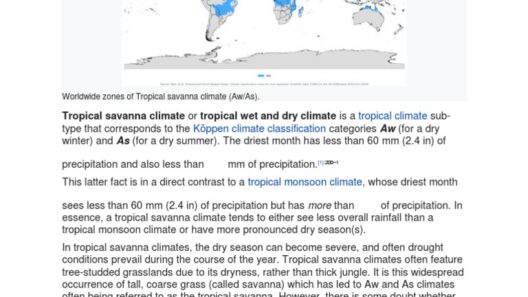Climate change, an insidious chameleon, cloaked in complexity yet unmistakably profound, presents an existential crisis that transcends borders, cultures, and ideologies. The world finds itself in a paradox where global agreements typically signify hope and unity, yet often falter against the inexorable tide of individual and national actions—or inactions. As greenhouse gas emissions continue to escalate and temperatures surge, a critical examination reveals how seamlessly woven the fabric of global accords and localized endeavors can be, and also how tragically frayed it often is.
The cornerstone of the global response to climate change resides in agreements such as the Paris Agreement, forged during the COP21 summit in 2015. This pivotal compact united nearly every nation, committing them to limit global temperature rise to well below 2 degrees Celsius above pre-industrial levels. Here, countries pledged both to mitigate emissions and adapt to the inevitable consequences of a warming planet. The metaphoric scaffolding of the Paris Agreement is constructed on nationally determined contributions (NDCs), where each country outlines its specific commitments. However, the reality is frequently marred by inconsistent action.
Consider the flurry of exuberant rhetoric that often accompanies these summits. Political leaders grasp the microphones like lifebuoys, proclaiming their dedication to the fight against climate change, yet the subsequent actions—or lack thereof—often resemble the aftermath of an elaborate theatrical performance, fading once the spotlight dims. For instance, while some nations tout ambitious targets, others languish in complacency, tethered to fossil fuels by economic necessity or political inertia.
Data from the Global Carbon Project indicates that despite an ever-expanding network of climate pledges, global carbon emissions continued to rise through 2022. This paradox underscores a critical dilemma: while global agreements may bring nations to the negotiating table, they often lack enforceable mechanisms to ensure compliance. Countries may elude accountability, much like elusive shadows that evade light, drawing into question the effectiveness of these ostensibly binding clauses.
Moreover, the notion of “common but differentiated responsibilities” encapsulates an essential tenet of international climate law. This principle acknowledges that while all nations face the perils of climate change, their historical contributions to greenhouse gas emissions and their capacities to address it vary significantly. Developing countries, grappling with poverty and underdevelopment, often find themselves in a straitjacket of dilemma, torn between economic growth and environmental stewardship. On the contrary, industrialized nations, bearing a heftier burden of historical emissions, are often reluctant to deliver on financial commitments essential for bolstering climate resilience in less affluent regions.
As the clock ticks away, the window of opportunity to mitigate catastrophic climate impacts narrows. The sentiment that “waiting for the world to act” has become a familiar refrain, echoing through the chambers of both climate negotiations and grassroots movements. Local actions play an indispensable role, yet they must be underpinned by robust international frameworks. Individuals—arms raised in solidarity—can drive change in their communities, but without systemic support, local endeavors often resemble trying to patch a sinking ship with pieces of paper.
To juxtapose the ambitious goals of international accords with the on-the-ground realities, we can look at an array of grassroots movements that have sprung up globally, revealing the myriad ways in which citizens mobilize to effect change. Initiatives such as Fridays for Future, spearheaded by youth activists, have captured global attention, compelling leaders to recognize the urgency of the climate crisis. The straightforward urgency articulated by these young stewards is a potent reminder that while governments can draft lofty ambitions, it is often the youth that bear the brunt of climate consequences.
Moreover, the intersectionality of climate action with social justice continues to gain acknowledgment. Movements advocating for environmental equity challenge the status quo, asserting that marginalized communities often endure the most severe environmental consequences while contributing the least to the problem. What becomes increasingly apparent is that addressing climate change does not merely require a list of action items; it necessitates a profound rethinking of societal norms, economic systems, and political frameworks that perpetuate inequality.
Unfortunately, the desire for quick solutions has also led some countries to resort to geoengineering—a controversial and largely experimental approach that seeks to counteract climate change through large-scale interventions in Earth’s natural systems. While the allure of manipulating atmospheric conditions resembles humanity’s age-old quest to master nature, it presents a Pandora’s box of ethical and environmental risks. Who gets to decide which technologies are deployed? Who holds the responsibility for unintended consequences? The uncertainty surrounding these questions suggests that while science can offer potential solutions, prudence must guide its application.
As the stakes escalate, the call for stronger domestic policies that align with international commitments grows louder. Transitioning to renewable energy sources, promoting sustainable agricultural practices, and implementing market-based solutions such as carbon pricing are essential steps that nations can take to bridge the chasm between global accords and actionable results. However, such measures require not just political will but also a rewriting of the narrative surrounding economic growth, challenging the misconceived notion that prosperity must be pursued at the expense of ecological health.
In concluding this discourse, it’s evident that the dichotomy between global agreements and tangible action presents an ongoing challenge in the fight against climate change. The world is at a critical juncture—fixed in a gaze wrought with urgency. The call for transformational change reverberates; it demands an intricate tapestry woven with collaborative efforts, scientific innovation, and grassroots mobilization. Only through the fusion of ardent idealism and pragmatic action can humanity hope to steer the course toward a more sustainable future. The future of our planet is not merely a matter of statistics and agreements, but rather the legacy we choose to forge through our collective endeavors. Will we heed the clarion call of our time or will our inaction entrap future generations in a cycle of climate despair?








